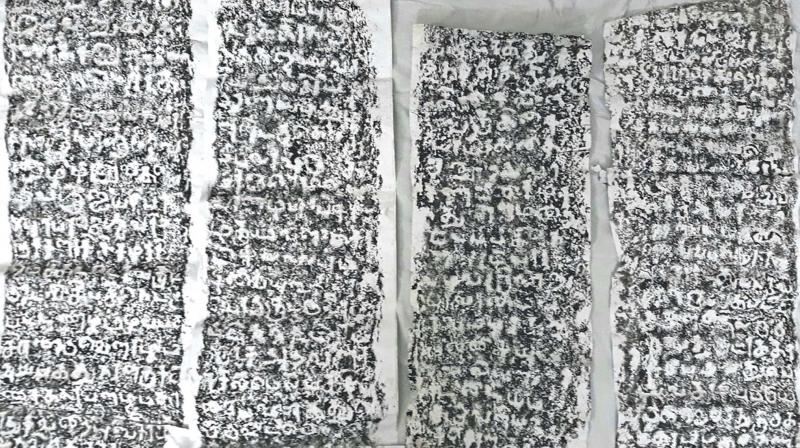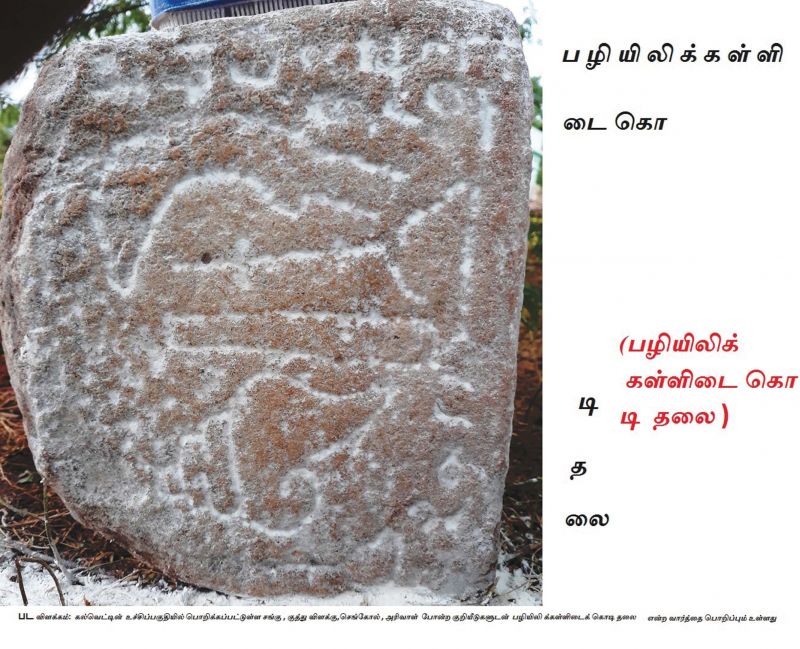Rare Chola era inscriptions found: When merchants were noble envoys of kings
Manikandan and president of the Heritage Club Karu Rajendran said that it is one of the rarest finds yet.

Tiruchy: Student- members of a ‘Heritage Club’ of the Government High School, Ellaippatti, in Pudukkottai district have found a rare Rajendra Chola inscription stone pillar of 11th century, near Sellukudi in the district recently.
A. Manikandan, founder of the Pudukkottai Archeological Research Forum said that Poovarasan a member of the club stumbled upon a rock with inscriptions. Their coordinator Kasthuri Rengan immediately informed him and they visited the field and found the inscription belonged to 11th century.
According to Mr. Manikandan, the inscription sang the praise of the great itinerant trade association’s merchant group called ‘Thisaiyaarathu Ainootruvar’.
Manikandan and president of the Heritage Club Karu Rajendran said that it is one of the rarest finds yet. Those days, merchants were treated on par with kings. They enjoyed royal rights and had a vast business area covering entire East Asia. These merchants had a strong influence over the East Asian region. They had an amicable relationship with most of the East Asian kings, they said.
 The stone inscriptions.
The stone inscriptions.
This kind of relationships made the merchants serve as ambassadors between kingdoms. “The new found stone pillar was a bit damaged in parts so there is no mention of the time, but the style of the scripture and praise of the merchant group confirms that it belongs to 11th century. It also mentions Rajendra Chola-I and so it is considered to be inscribed in the 11th century CE.” Manikandan said.
He also said that the stone pillar is five-feet tall and the top side has inscriptions. At the top of the pillar, an image of a scepter, an eagle, an arivaal (a weapon as well as a tool), a conch and lamps are carved. The words, “Pazhiyali Kallidaikkodi Thalai” are inscribed. This is considered to be the honorary title given to Rajendra Chola-I.
The inscription begins with words, “smastha buvanatha” and followed by seven lines of invocation to God. In the following lines, the group of merchants introduce themselves as people of ‘Goddess Maheswari of Ayyappozhil’. The next lines speaks of 18 heavily guarded port cities with moon-reaching palaces and great roads, 32 commercially important towns, and 64 heavily guarded marketplaces with warehouses. “This indeed gives a spectacular part of the Tamil Marchant Groups, and their influence,” he said.
Mr. Manikandan further said the inscription tells us about the members and their community background, with the words Chetti Seerputhiran, Kavarai (Merchants), “kaasiyavan vidutha kaamunda suvami” (Landlord), “uruthiranthu viduthaolai vaaranu” (Accountants) “seeriya sendvanum”, indicating who made the group.
The richness of the landscape is also depicted in the inscription. Trees of jack fruit, mango, banana, along with betel tree, climbers like Mullai, are infested with birds like cuckoos and parrots, he added. The birds were in merry without any pain, and in this wonderful land the ‘Merchant Group’ held the scepter and ruled.
The name of the village is very clearly mentioned as Selvikudi. The ‘Merchant Group’ consisted of people from all walks of life. Its organizational structure is awe-inspiring, as it consists of “Merchants, Land Lords, Accountants, Guards, Soldiers, port cities, merchant towns, marketplaces, and warehouse with proper guards”.
This mercantile group shared their wealth for the public welfare and common good. In the ancient past, there were several ‘East Asian Merchant groups’, but this ‘Tamil Merchant Group’ is regarded as the best by historians. They enjoyed privileges among kings of ancient Tamil, as well as with the East Asian Kings, opined researchers Manikandan and Karu Rajendran.

